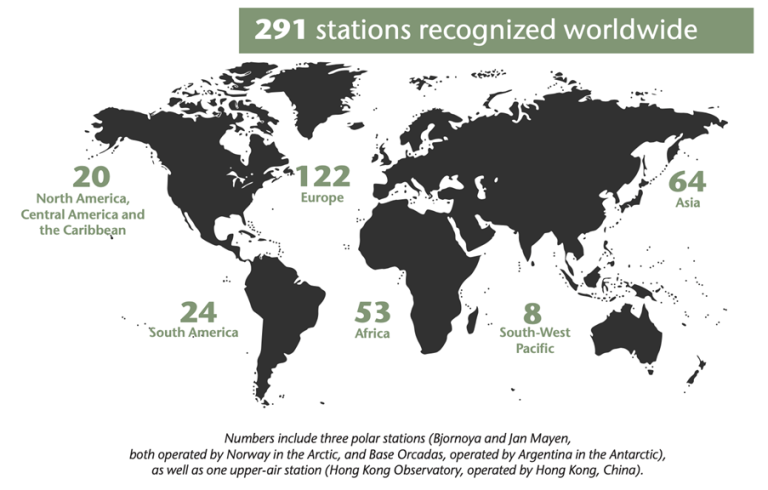Centennial weather stations are vital for climate monitoring
The World Meteorological Congress has recognized the vital contribution of long-term weather observations to monitoring climate change, given the need for reliable historical records of the past to understand the present and prepare for the future.

The World Meteorological Congress has recognized the vital contribution of long-term weather observations to monitoring climate change, given the need for reliable historical records of the past to understand the present and prepare for the future.
In a ceremony, WMO President Gerhard Adrian presented certificates of recognition to centennial observing stations - which have marked their 100th anniversary of operation – as part of an initiative to encourage governments to preserve our scientific memory.
The World Meteorological Organization has so far recognized 291 centennial weather stations and Congress increased this by a further 118 by including, for the first time, hydrological and marine stations.
A recent publication Centennial Observing Stations State of Recognition Report – 2021 shows how observations from long-term observing stations and other platforms (including satellites, buoys, vessels, airplanes and so forth) are vital inputs to climate models that scientists use to understand the climate and create credible scenarios of future climate change.
They accurately measure how high-impact events such as intense heatwaves or extreme rainfall are changing in terms of occurrence, and so make it possible to evaluate risks and find solutions.
Other impacts might include mudslides and rockslides due to melting permafrost, or reduced hydropower supply due to changes in water flows, or damaged crops due to drier and hotter summers, all of which have the potential to have devastating effects on a country’s long-term socioeconomic development.
Beyond providing consistent data over decades, many Centennial Observing Stations also contribute to the WMO World Weather Watch system, ensuring that weather data are shared around the world every day.
WMO’s climate monitoring and its annual State of the Global Climate reports would not be possible without long-term observations from weather stations around the world. These make an essential contribution to our understanding of the climate system and inform international mechanisms such as the United Nations Framework Convention on Climate Change (UNFCCC).
Staff and resources
The history of coordinated weather observations by an observational network dates back to more than 200 years ago when, in 1781, the Societas Meteorologica Palatina in Europe began systematic and coordinated weather observations.
Maintaining an observing station, day in and day out, for more than 100 years is a major challenge. It requires skilled staff, financial resources, a stable location for the equipment and – perhaps most importantly – dedication and commitment. This is especially true in the inhospitable Arctic and Antarctic.
Unfortunately, too many old weather stations are being closed because of budget constraints or urban development.
WMO’s Centennial Observing Stations initiative to raise awareness of this issue and to encourage governments everywhere to protect and maintain the vital scientific records generated at these stations.

Photos of the ceremony of recognition of centennial stations at the World Meteorological Congress are available on Flickr

